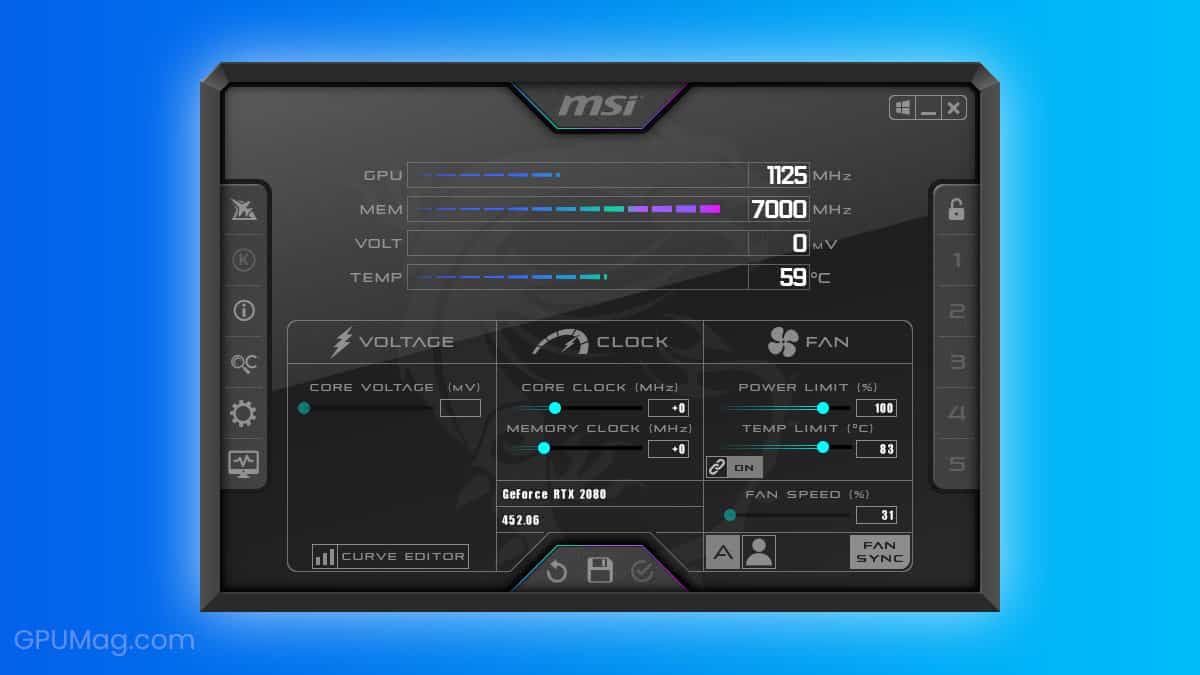

- MSI AFTERBURNER HARDWARE MONITOR INSTALL
- MSI AFTERBURNER HARDWARE MONITOR DRIVERS
- MSI AFTERBURNER HARDWARE MONITOR DRIVER
It is furthermore possible to activate hardware monitoring history logging which can be helpful when you are troubleshooting video card problems. Hardware monitoring graphs can be enabled or disabled in this tab. Note that MSI Afterburner needs to run in the background for this to work. You can link different temperature levels to different fan speed levels to customize the fan speed of the video card based on that. The fan speed could for instance be lowered if the gpu temperature is low and increased if the temperature rises.

This opens a graph where the fan speed can be adjusted to the temperature of the graphics card. The fan speed controls can be changed from automatic to user defined. Here it is possible to change the behavior of the card's fan(s), the hardware monitoring, on-screen display and profiles among other options. The settings button leads to an extensive configuration menu. It is for example possible to create one standard profile, one overclocked profile for gaming and other gpu intensive tasks and one underclocked profile for situations where the graphics card is not needed at all to save power or tune down the fan to limit noise generation. This is handy for overclocking or underclocking the graphics card in specific situations. Settings can directly be saved as profiles. It is for instance possible to see the graphics card maximum and minimum temperature, fan speed and core clock changes. These depend largely on the capabilities of the video card. The hardware monitor on the right side displays max and min values. Sliders are available to change the core parameters directly. While you can run MSI Afterburner on unsupported video cards, you won't get much out of the program as most options are unavailable. The availability of these values depends largely on the graphics card itself: if it is supported it should be shown.
MSI AFTERBURNER HARDWARE MONITOR DRIVER
The core information includes the graphics card name and driver version as well as the core voltage, core clock, shader clock, memory clock and fan speed. The guide is based on the default MSI Afterburner 2 skin. It may use different skins to display the data the default skin that you see on the screenshot above was displayed on one machine, and a more futuristic looking cyborg skin was displayed on another.Ī click on settings > user interface displays options to switch to a different skin if you don't want to use the selected one. The program displays a hardware monitor and core information about the graphic card on startup.

If you need those, keep the server enabled. It provides frame rate monitoring, on-screen display and video capture services. You can disable the Statistics Server so that it won't get installed.
MSI AFTERBURNER HARDWARE MONITOR INSTALL
The installer is straightforward note that you will install MSI Afterburner and Riva Tuner Statistics Server by default. MSI Afterburner is based on Rivatuner, another popular video card configuration software. The program does not work with cards from other manufacturers, e.g.
MSI AFTERBURNER HARDWARE MONITOR DRIVERS
Try updating the drivers if the video card is not recognized by the software immediately. A rule of thumb is that MSI Afterburner supports most Geforce and Radeon cards provided that the drivers installed are not too old.


 0 kommentar(er)
0 kommentar(er)
